Balkanethnoexp. Part XI. SerbiaMap
June Serbia is a fascinating country. As a result of creating a huge mess out of nothing, the Serbs lost practically everything. When then-president of Yugoslavia Slobodan Milošević began making proclamations about the Serbs’ superiority and dominance, the other ethnic groups in the country decided it was time to jump ship. Only Slovenia and Macedonia managed to secede without a fight. Croatia, having the main resorts and beaches in its possession, was forced to spend several years at war with the Serbs. Not taking too kindly to Croatia’s separatism, the Serbs bombed Dubrovnik in revenge, basically saying: fine, if you’re going to be that way, then no World Heritage Site for you. Bosnia fought for—and won—its independence as well. With Kosovo (which eventually became an independent state too, of course), the war reached a phase of total idiocy. Instead of overthrowing Milošević, the Serbs continued to put up with him; the international community, meanwhile, had decided that enough was enough. And NATO began to bomb Belgrade. For the Serbs, this was an unprecedented moment of coming together in the face of international aggression. People organized concerts, held hands, drew posters. But apparently still didn’t understand what they were being bombed for. As a consequence, Milošević lost the election, and the country gradually began to return to normal life. Except that now Montenegro, which had stuck by Serbia the longest, decided it was time to go its own way and split off as well. Serbia was left the only one cut off from the sea, deprived of important historical monuments and reviled by its neighbors. School of hard knocks. 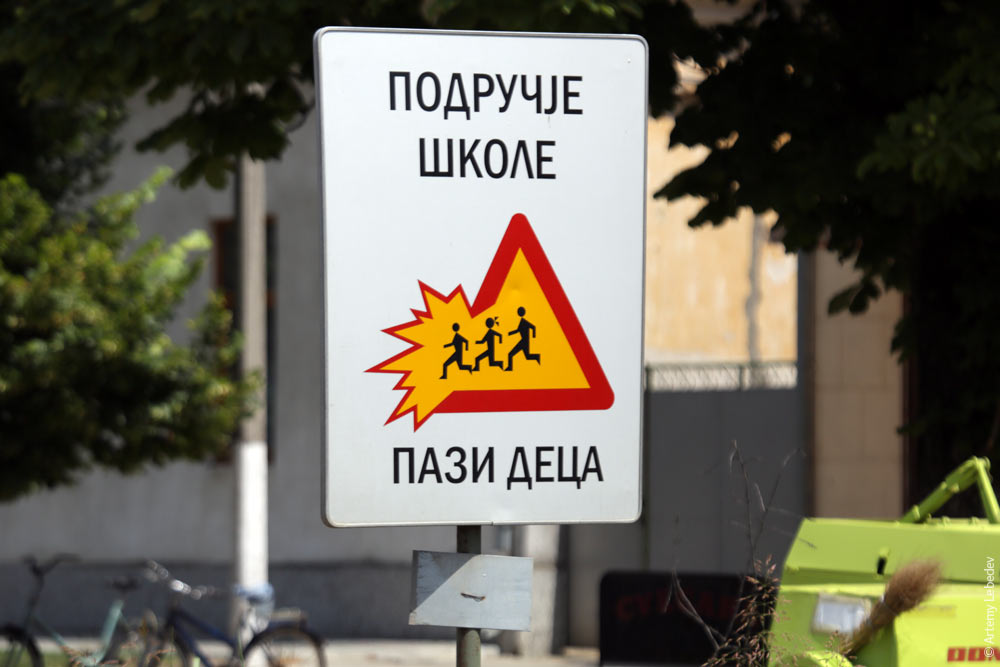 BelgradeMap
There are few traces left of the bombings. 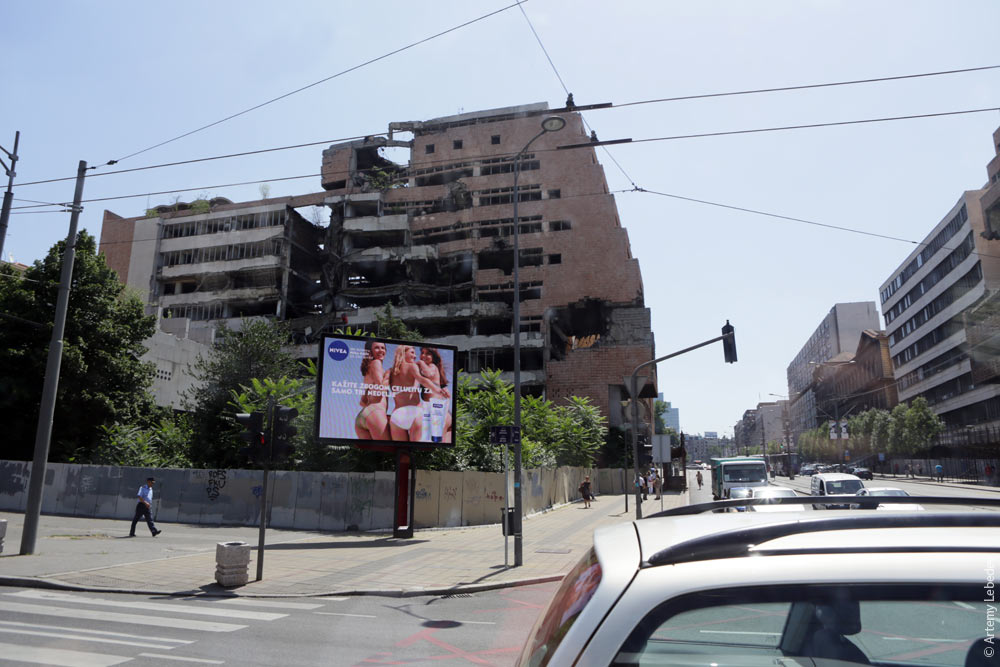 Belgrade is a wonderful city. 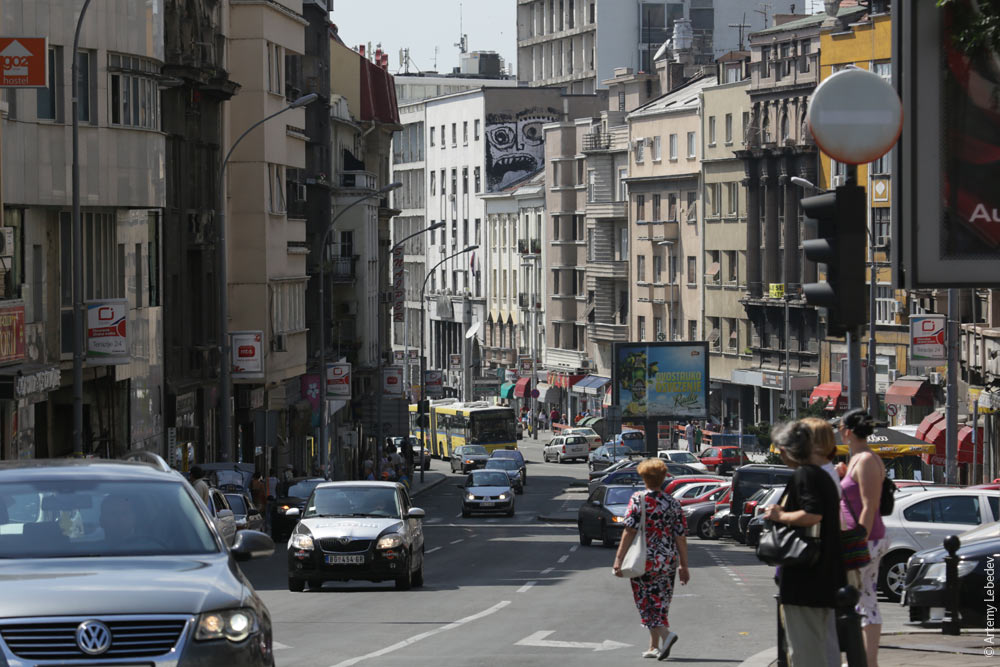 A bus stop. 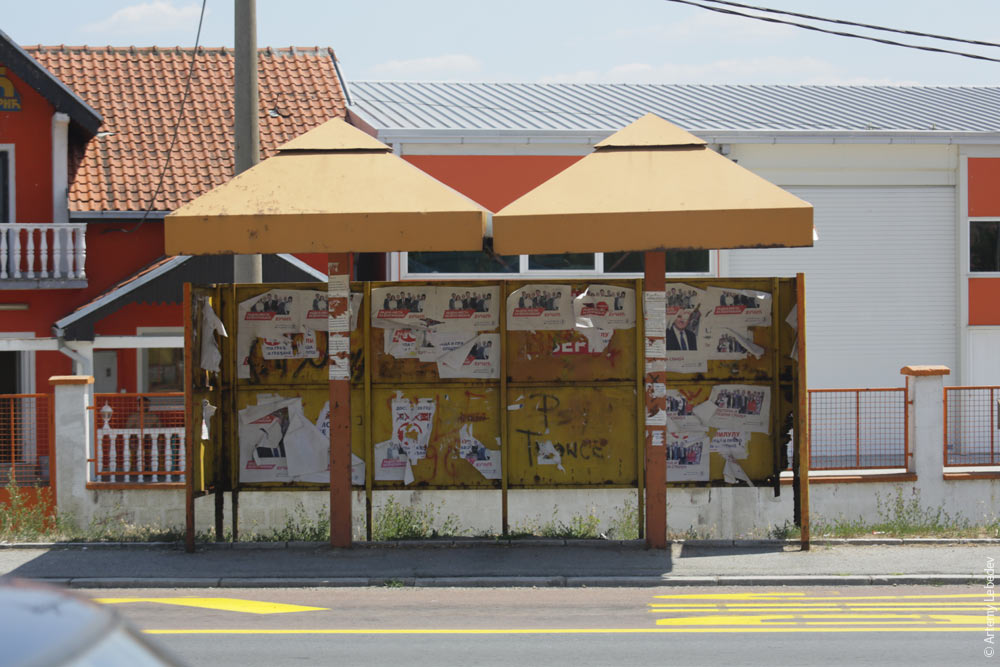 Payphones. 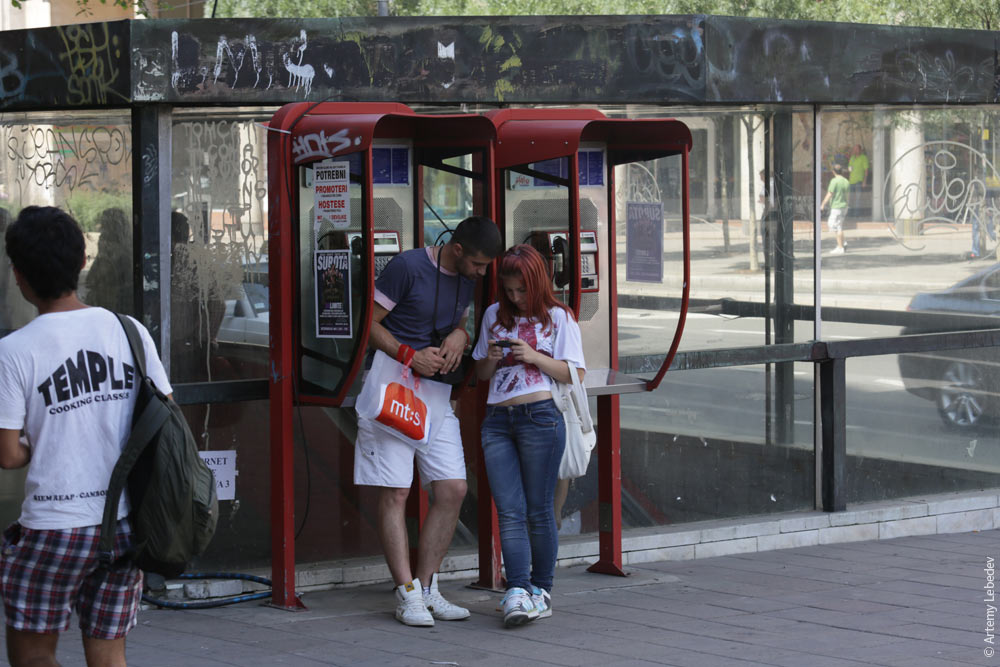 An old street sign. 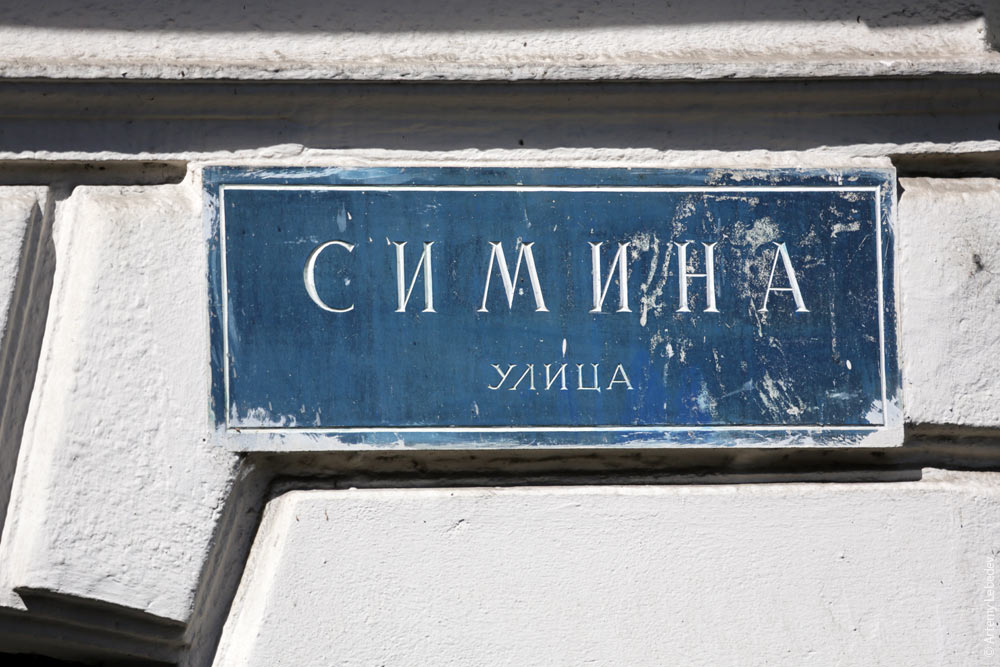 A new street sign. 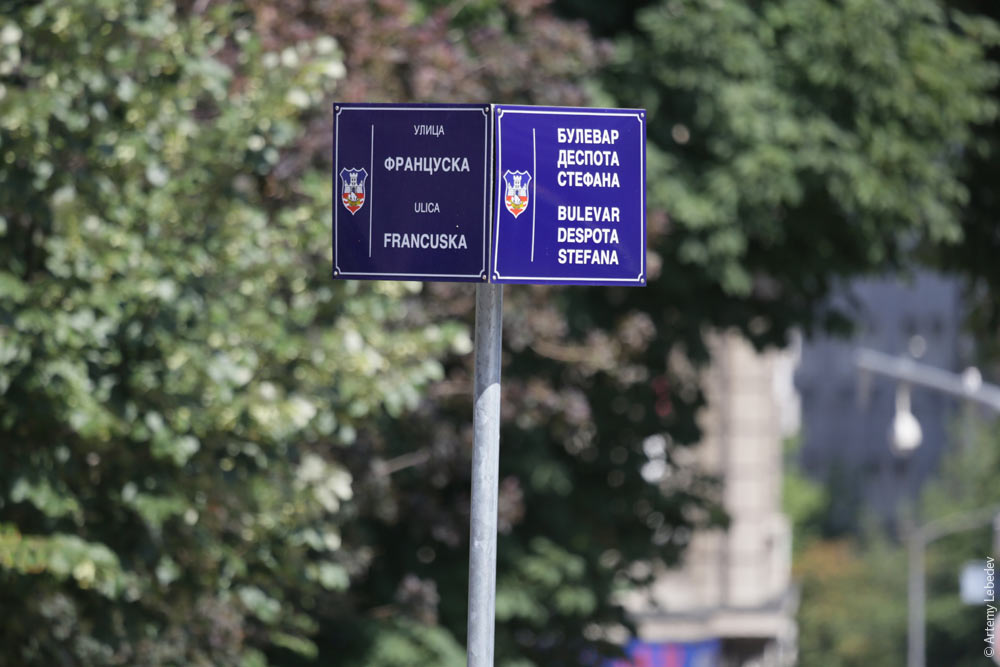 A pretty triangular manhole location marker.  An antique insurance plaque. In color, which is a real rarity. It most likely survived thanks to the protective layer of cement. 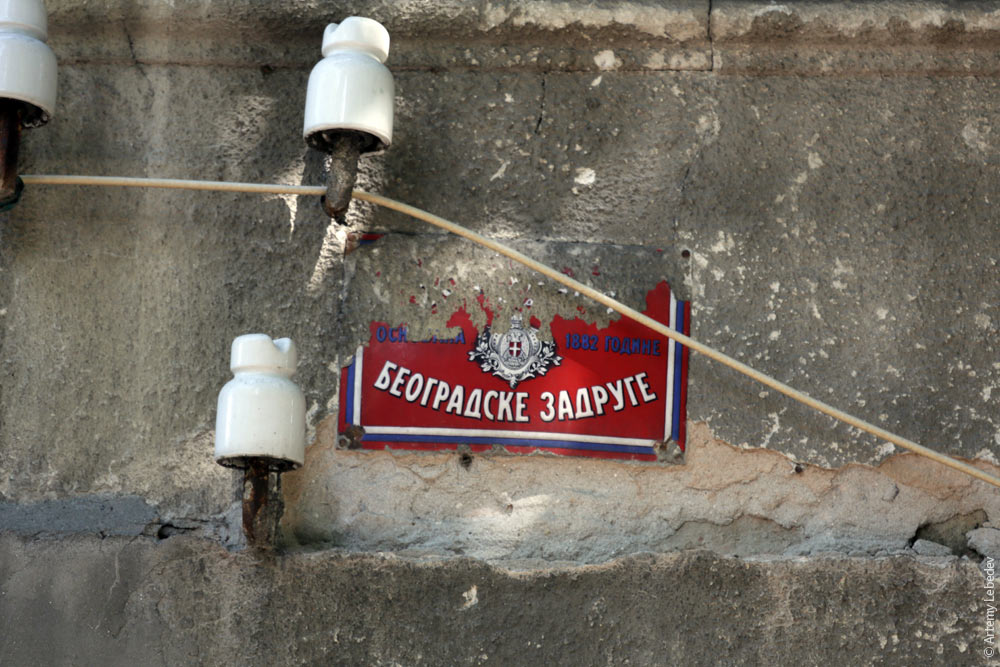 Handicapped parking. The sign is strictly adhered to at all times, violators are towed instantly. 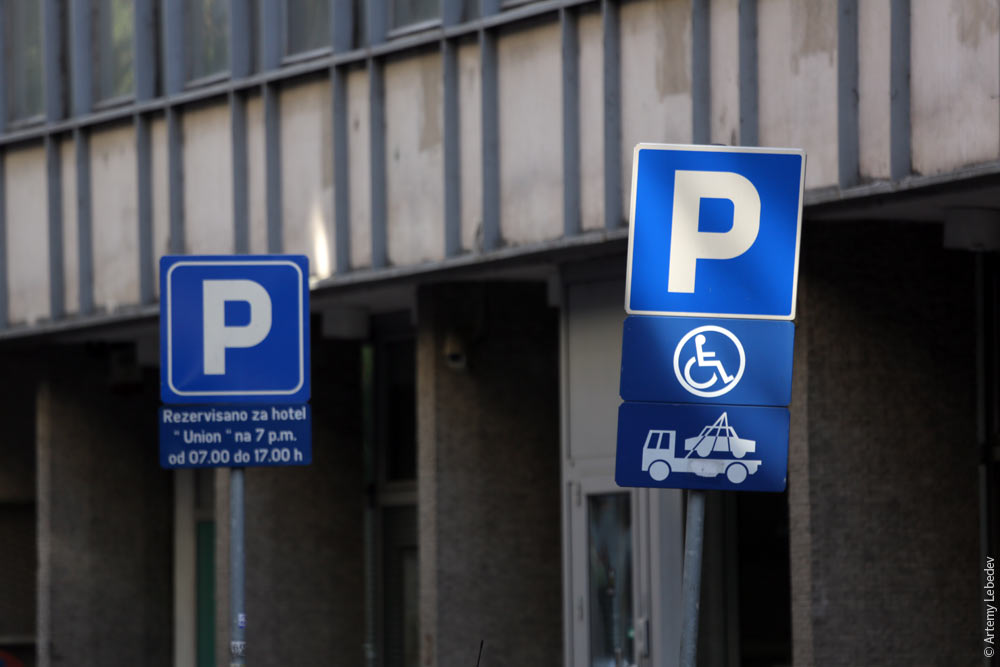 An underground pedestrian crossing. 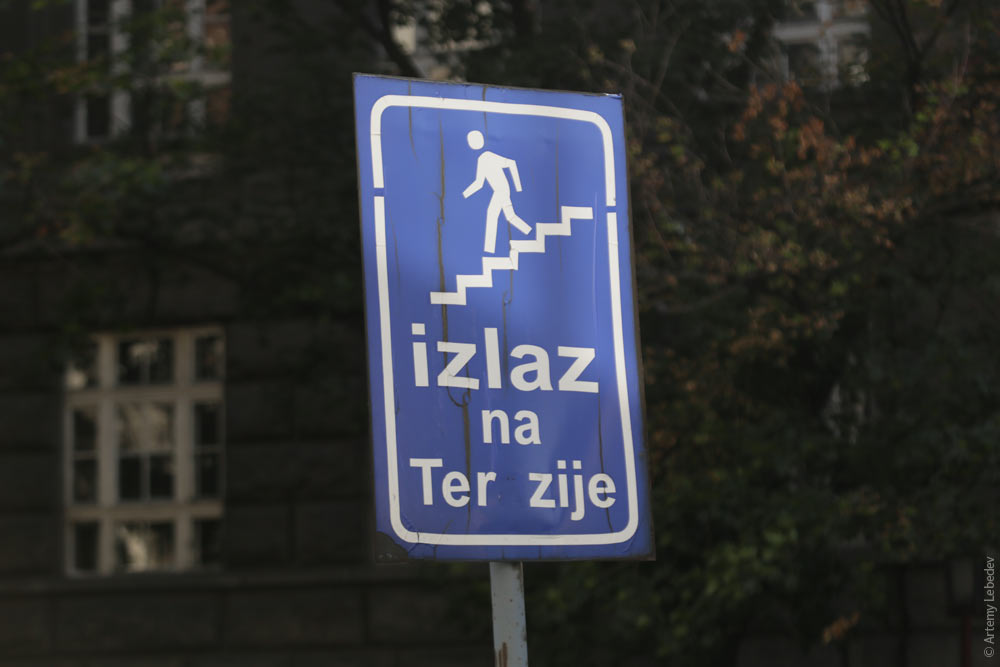 A wayfinding sign. 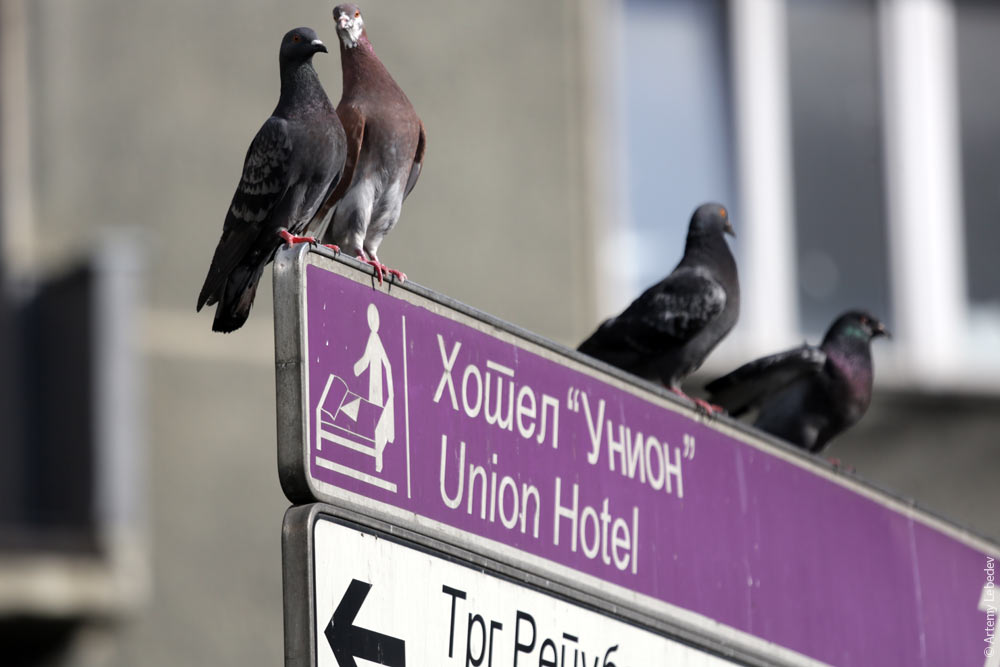 A hydrant. 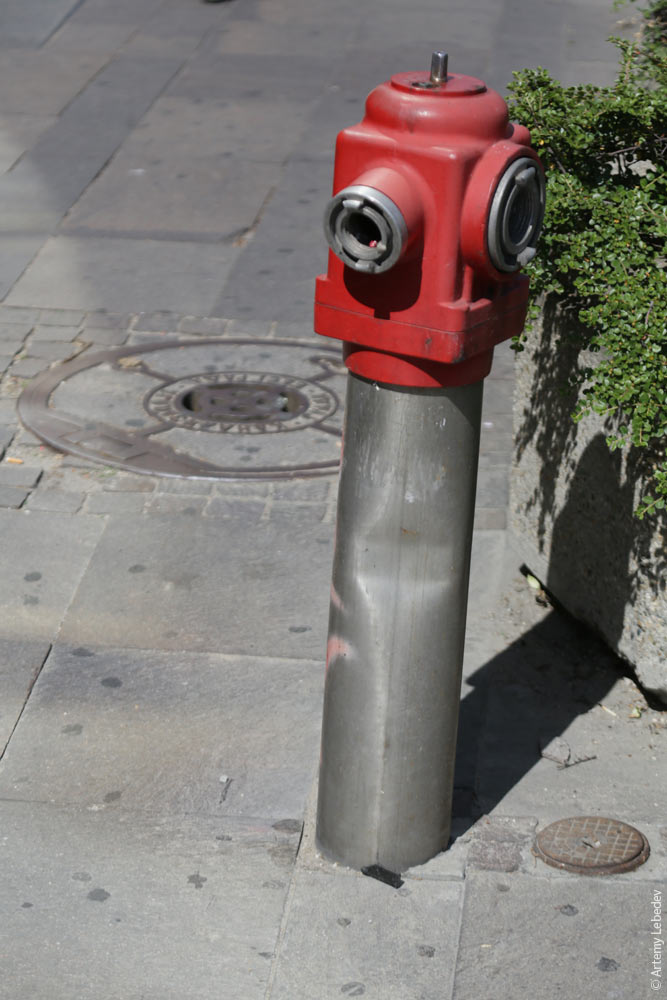 A different hydrant. 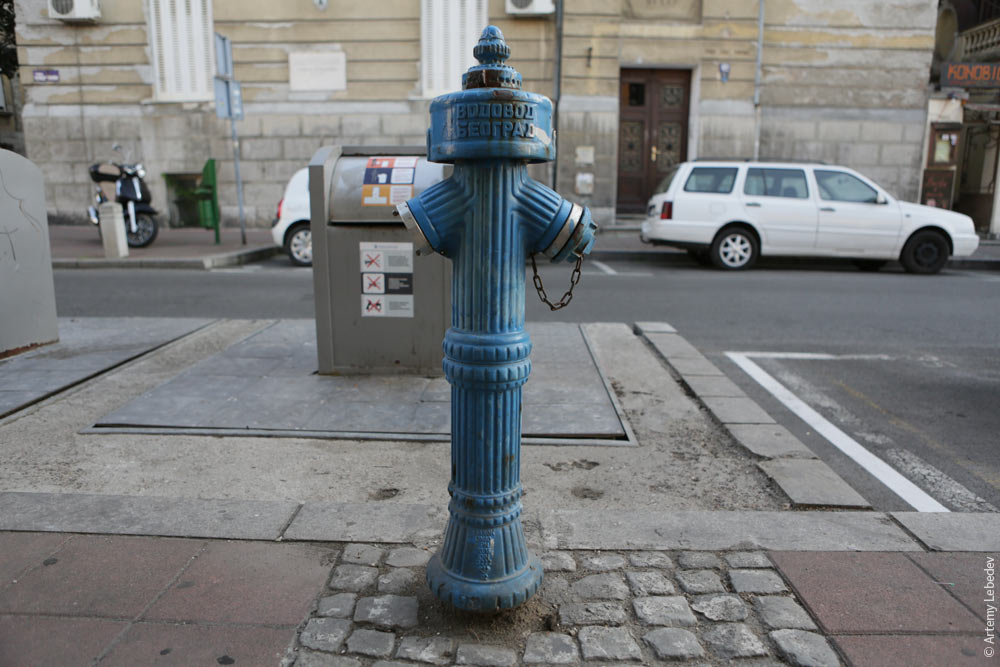 Trash dumpsters. 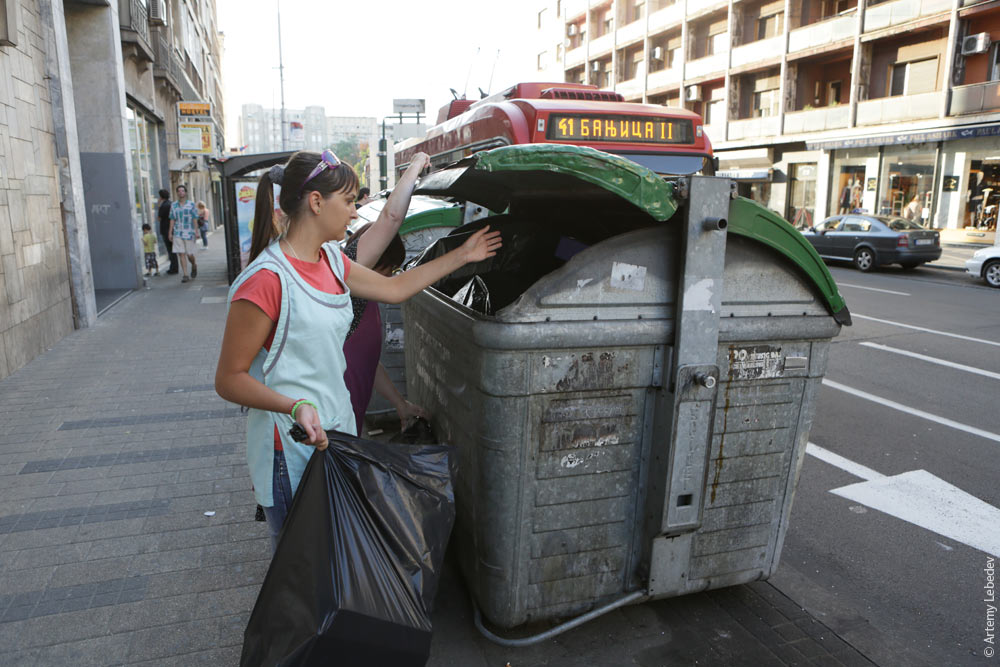 Giant underground garbage containers. 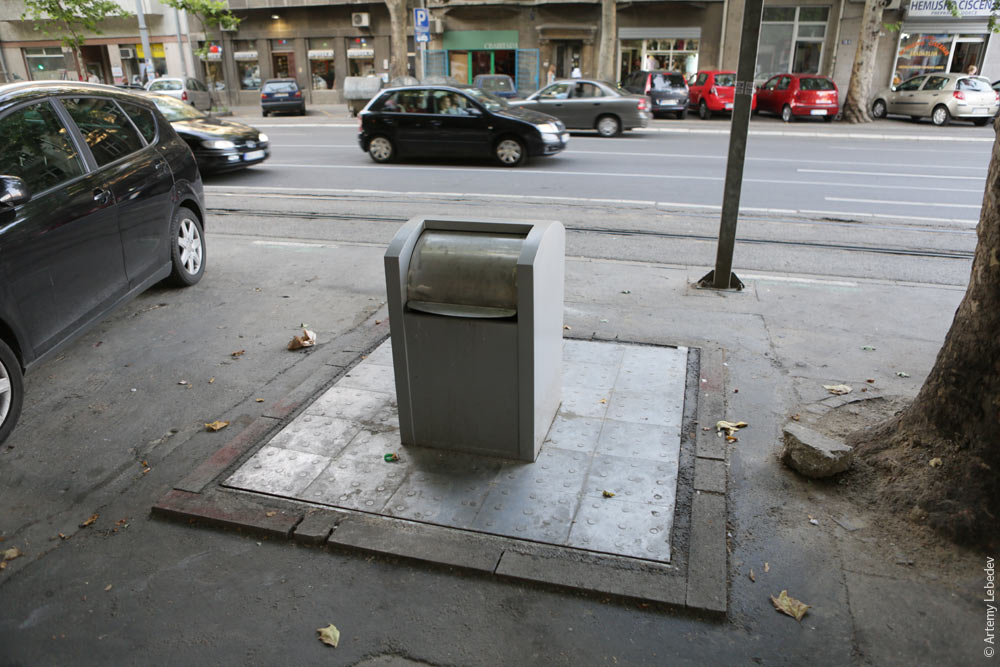 A Belgrade street trash can with an integrated ashtray. 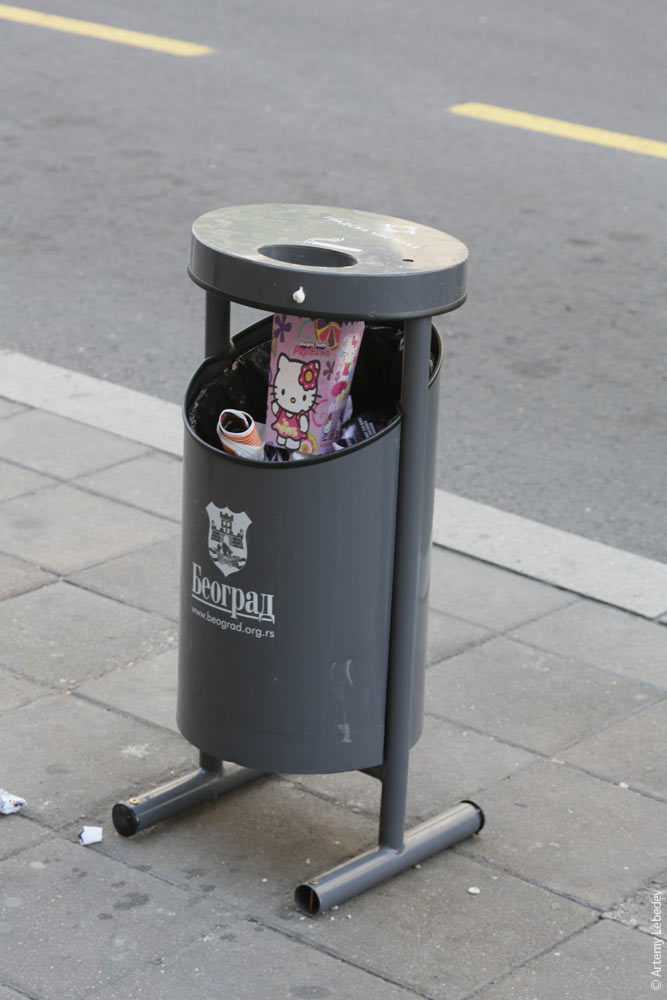 A trash can with a dog poop bag dispenser. There are almost never any bags. 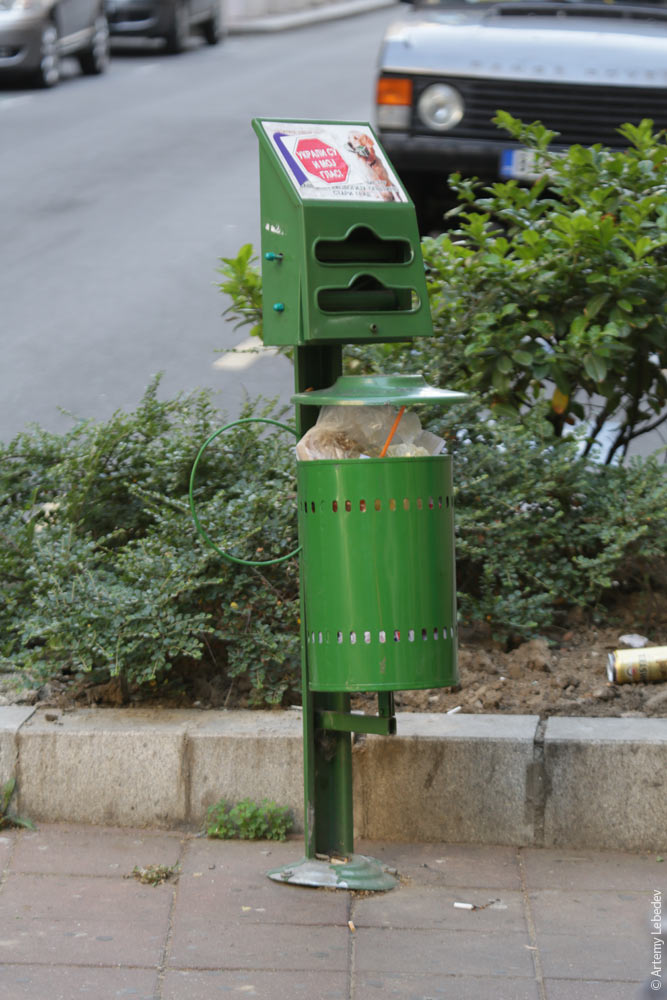 Although the problem, judging by the special dog-poop scraper for shoes near a building entrance, is a common one. 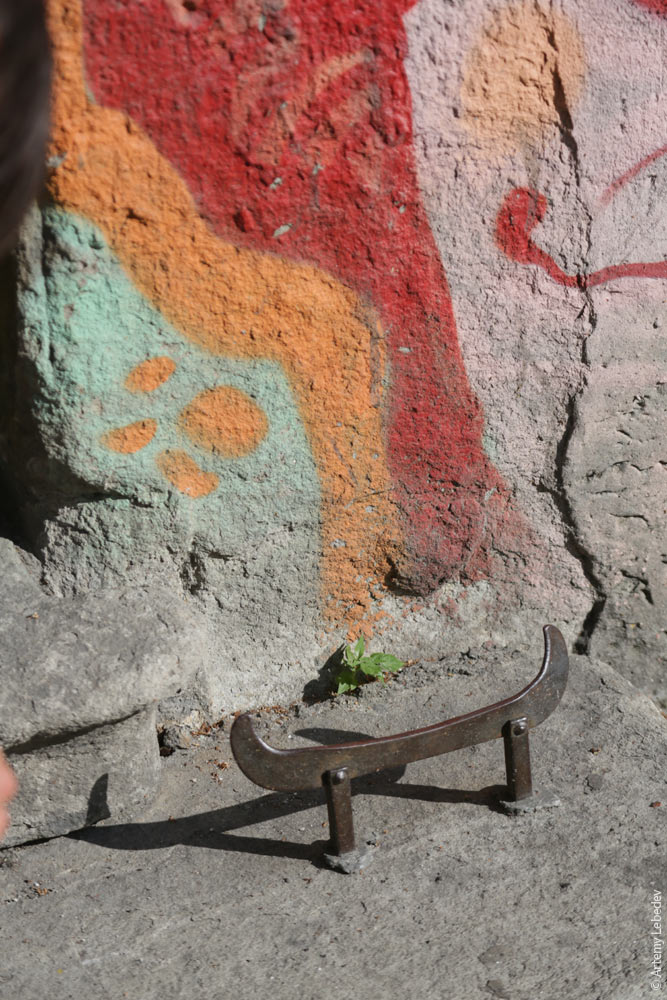 The national theater. 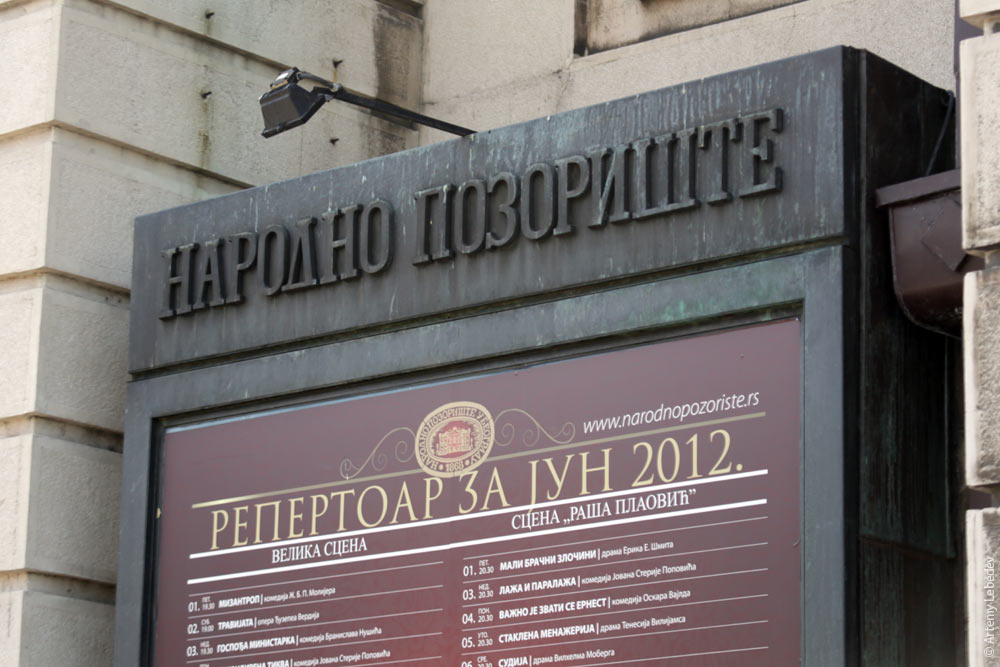 Children. 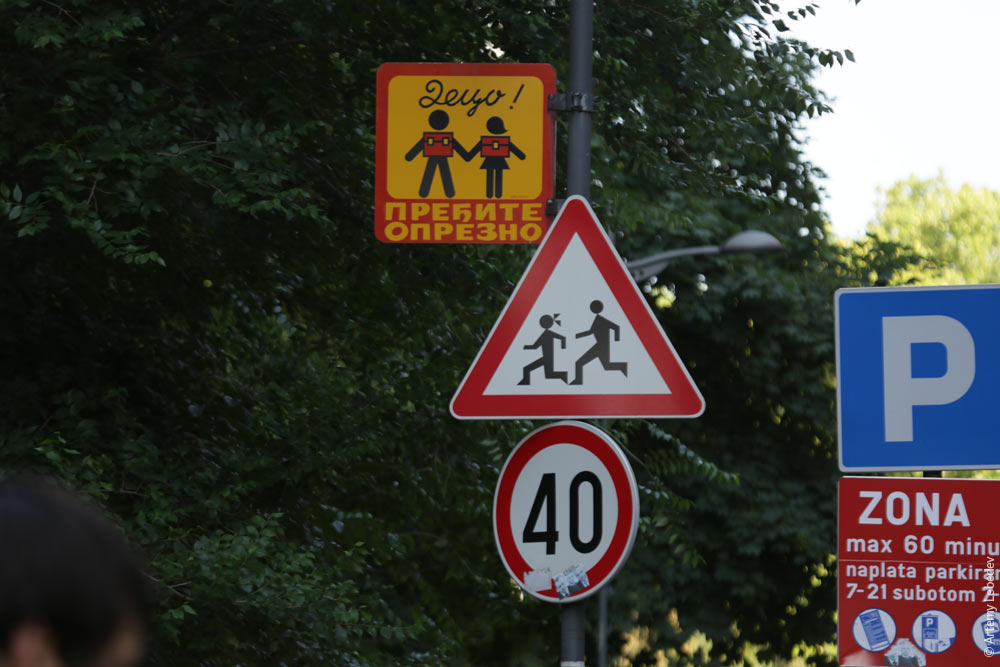 School. 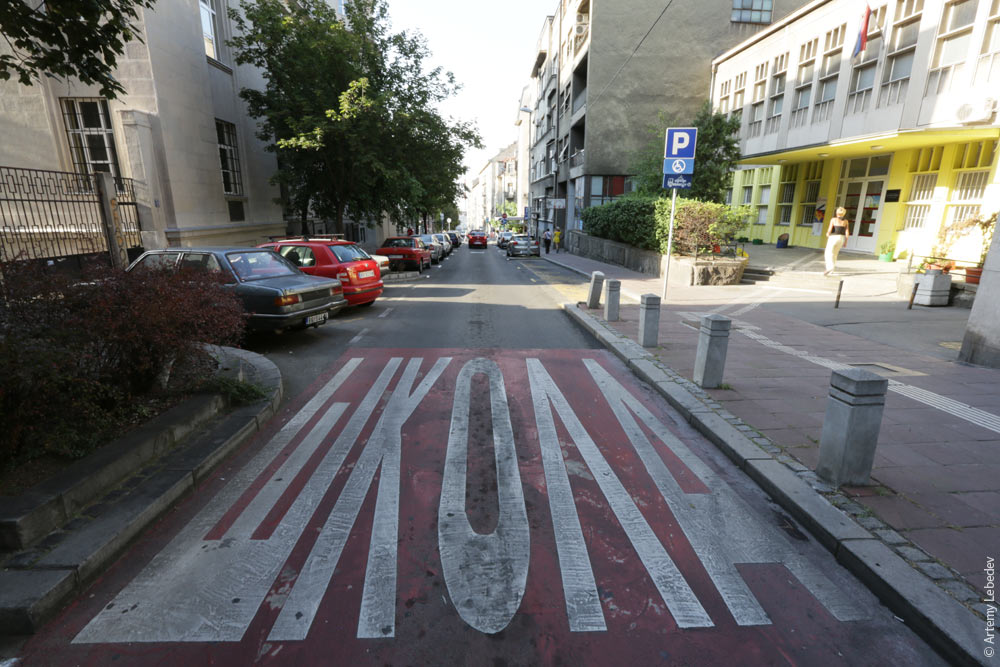 A public transport lane. 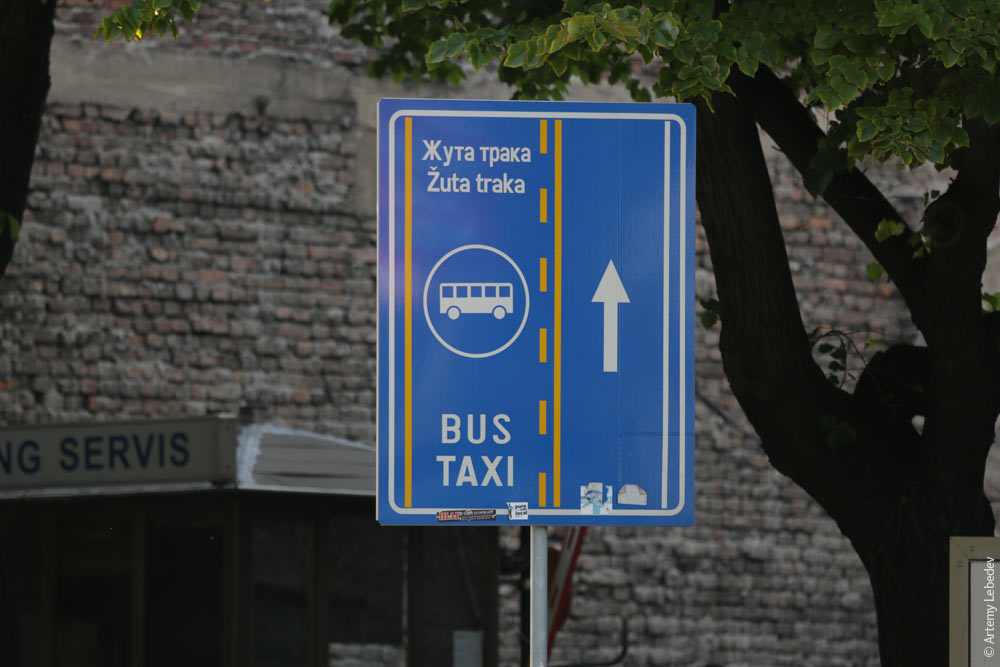 Do not block the raskrsnicu. A box junction, marked with crisscross lines (like in the USA, Northern Cyprus, Romania or Hong Kong), means that cars aren’t allowed to enter the intersection unless the path is clear for them to make it all the way through.  Coffins on wheels are prohibited from passing passenger cars (the same sign exists in Slovenia). 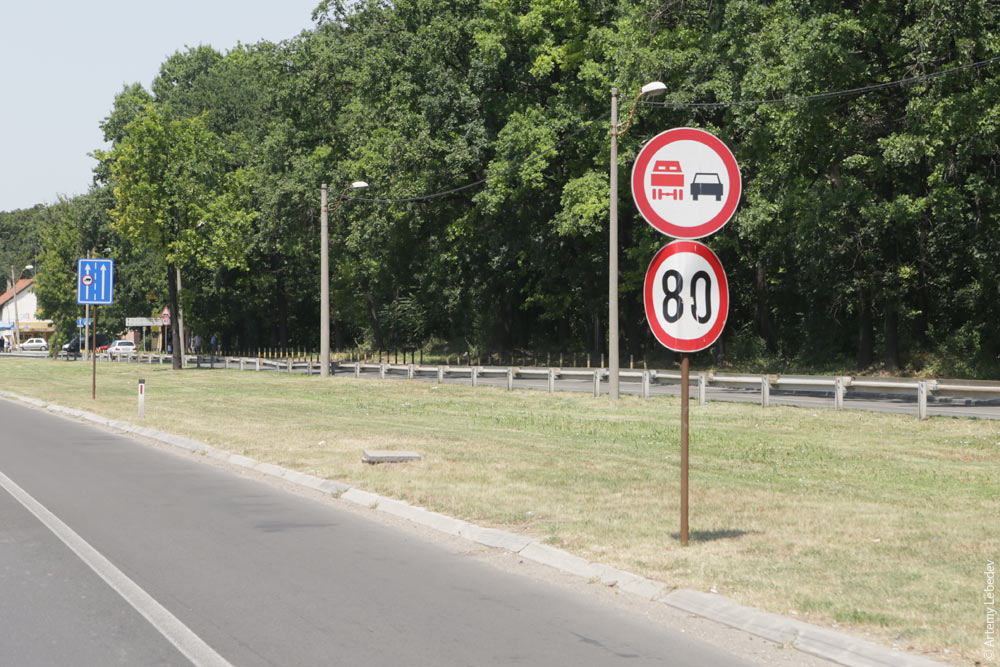 A Serbian license plate. Unlike in Macedonia, only the city code is translated into Cyrillic letters here (BG = Belgrade). 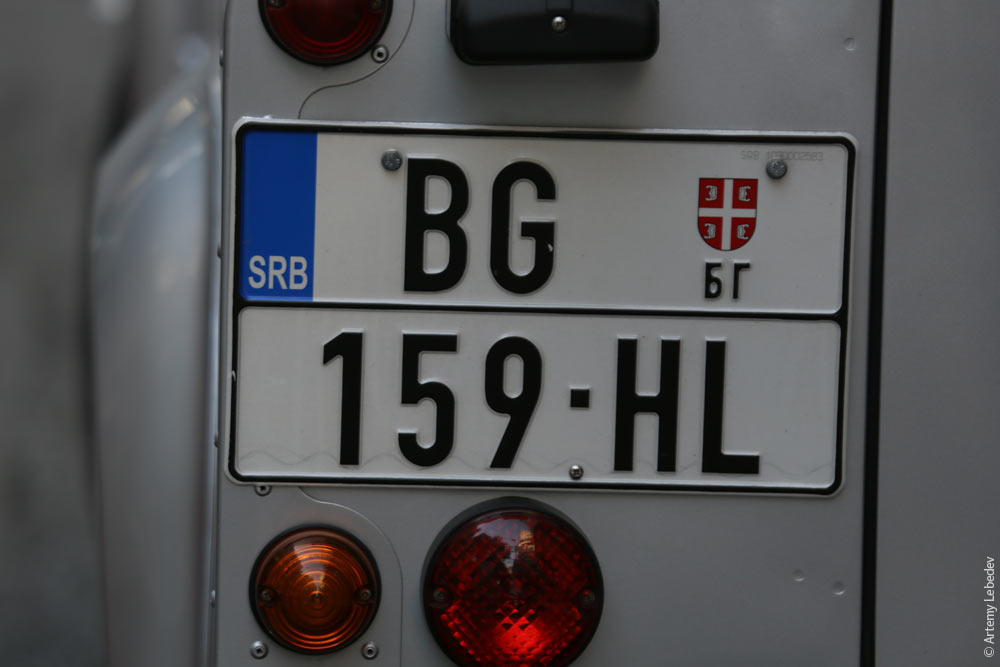 A little telephone junction box in the wall of a building. 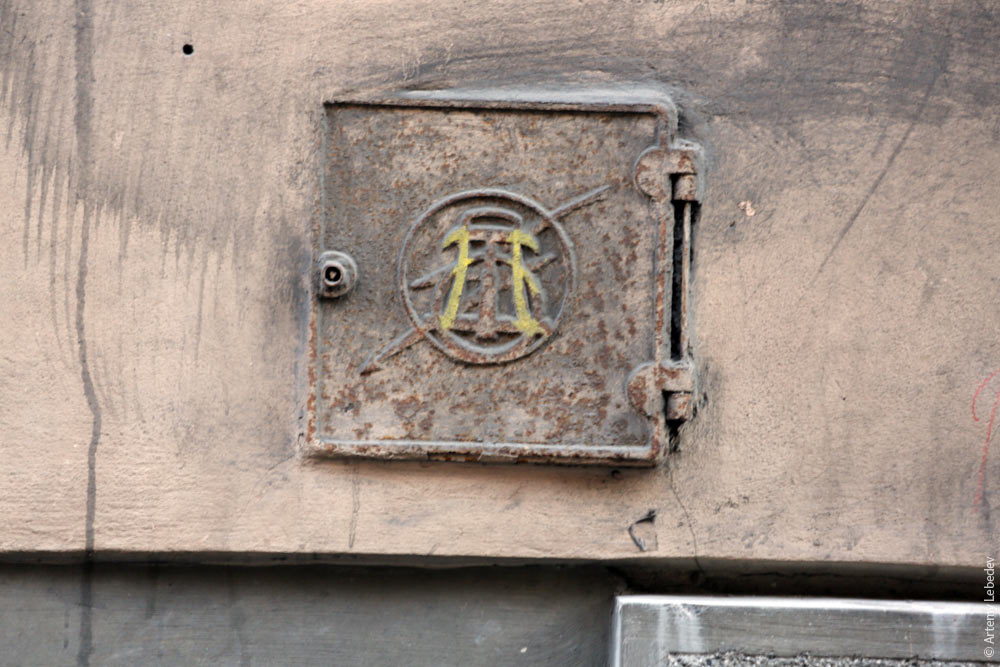 A pedestrian traffic light. 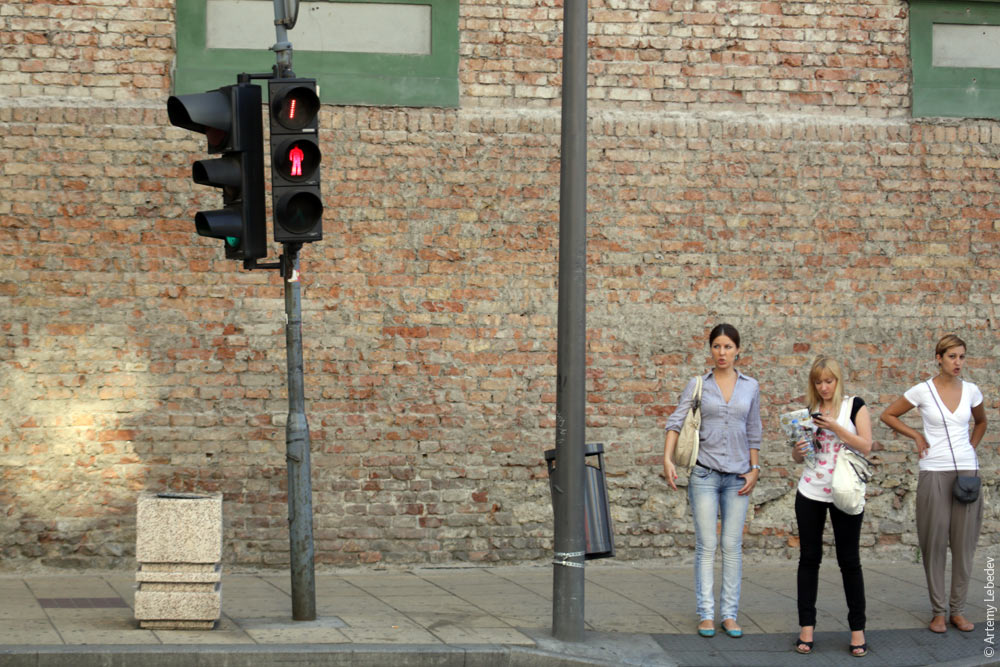 A car traffic light. 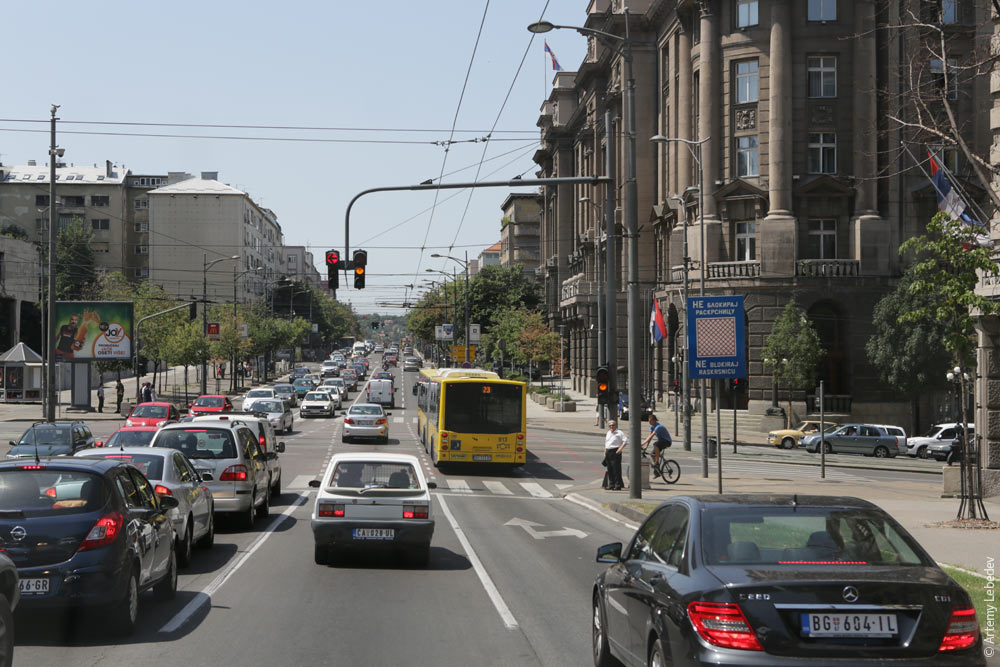 The trolleys in the capital. 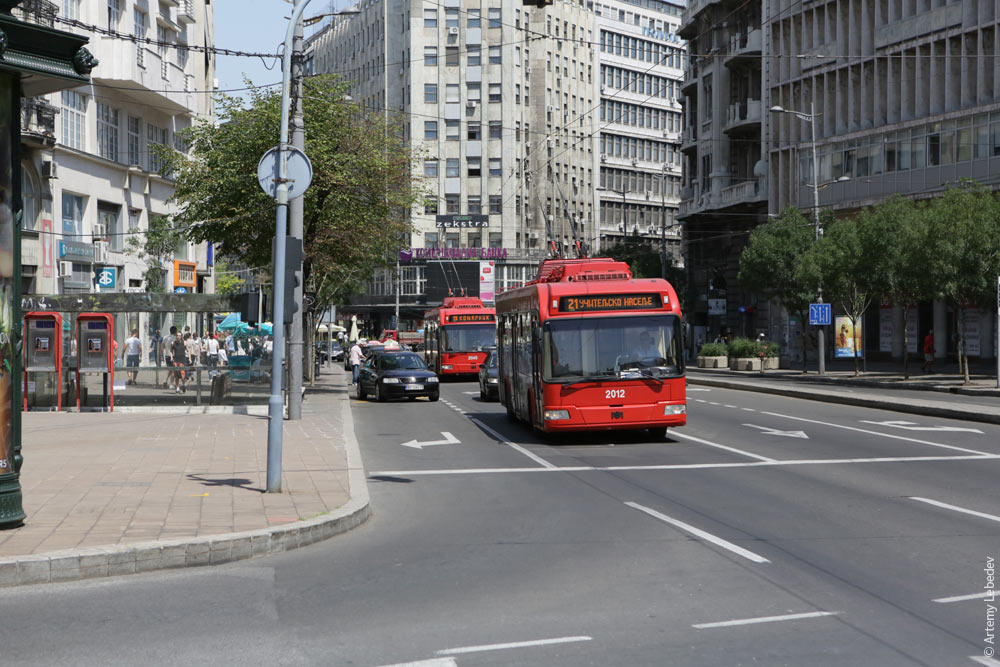 An old post box—petite and yellow, like in all the other ex-Yugoslav countries. 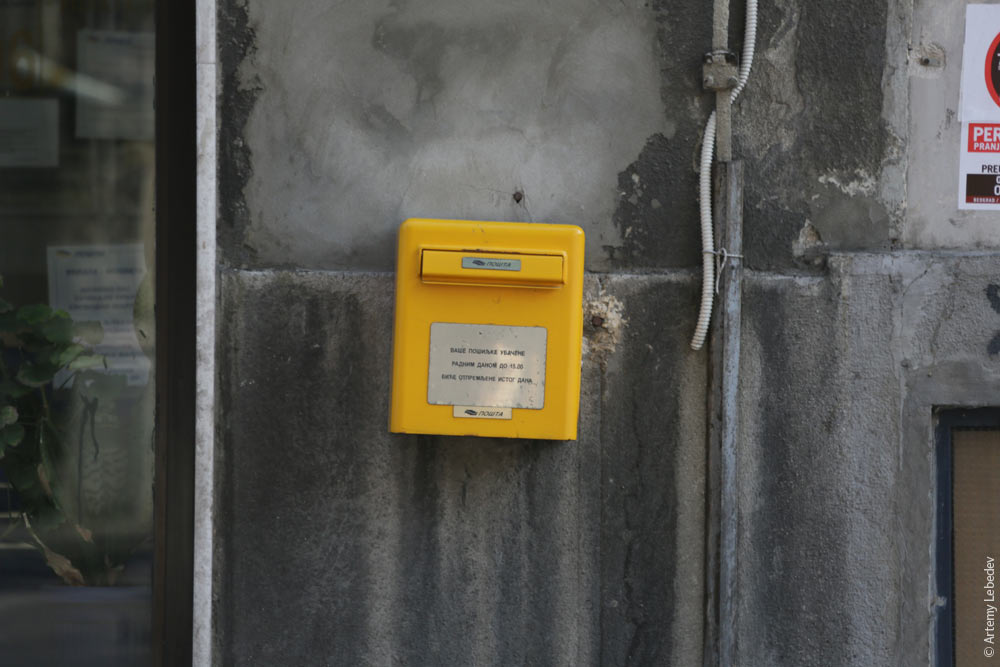 A new post box—giant, dark red, with gold detailing. This one would look equally good in the center of Vienna. 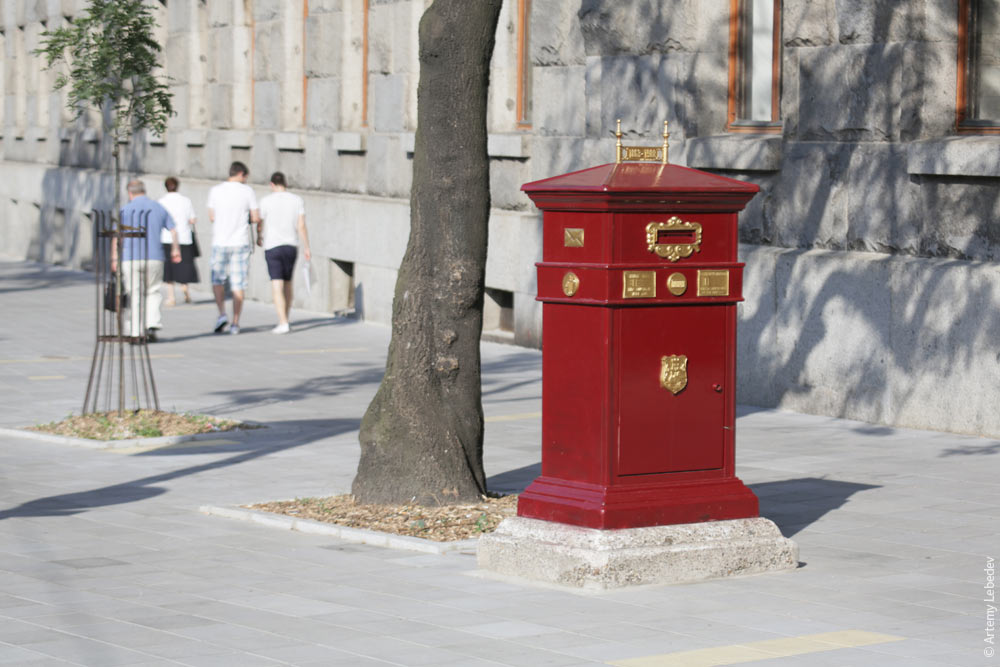 Belgrade makes you want to come back. Novi SadMapThe post boxes are exactly the same as in the capital, only yellow. 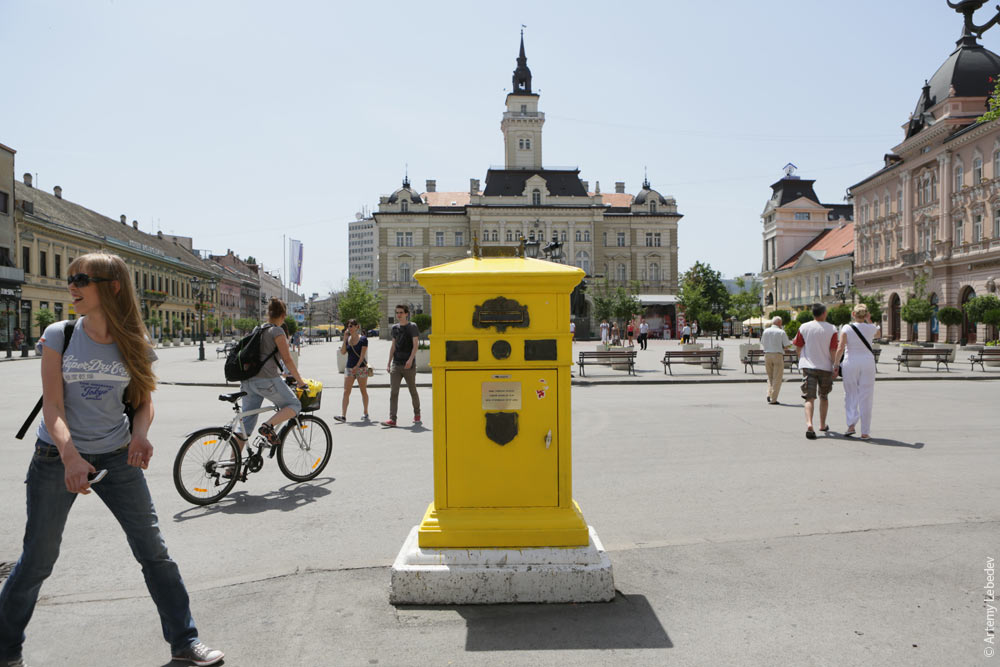 The junction box where the building connects to the power grid has the traditional Balkan (see Macedonia or Montenegro) decorative panel which narrows towards the bottom.  You can pay for your parking via text message. 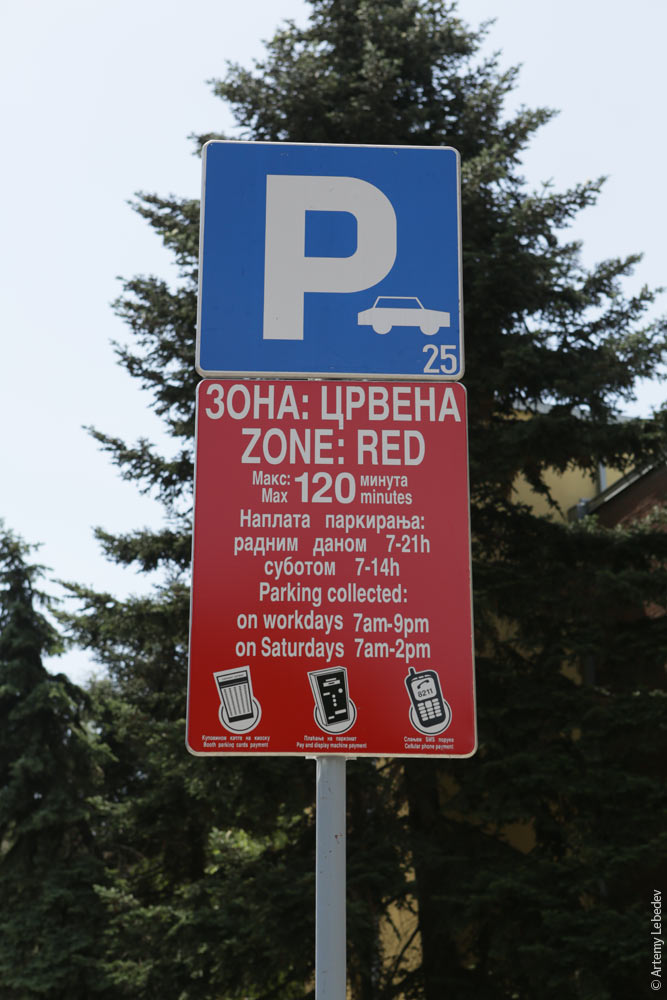 There’s free WiFi downtown for those who, in addition to having a sharp eye, are clever enough to search for the login and password on the sign. 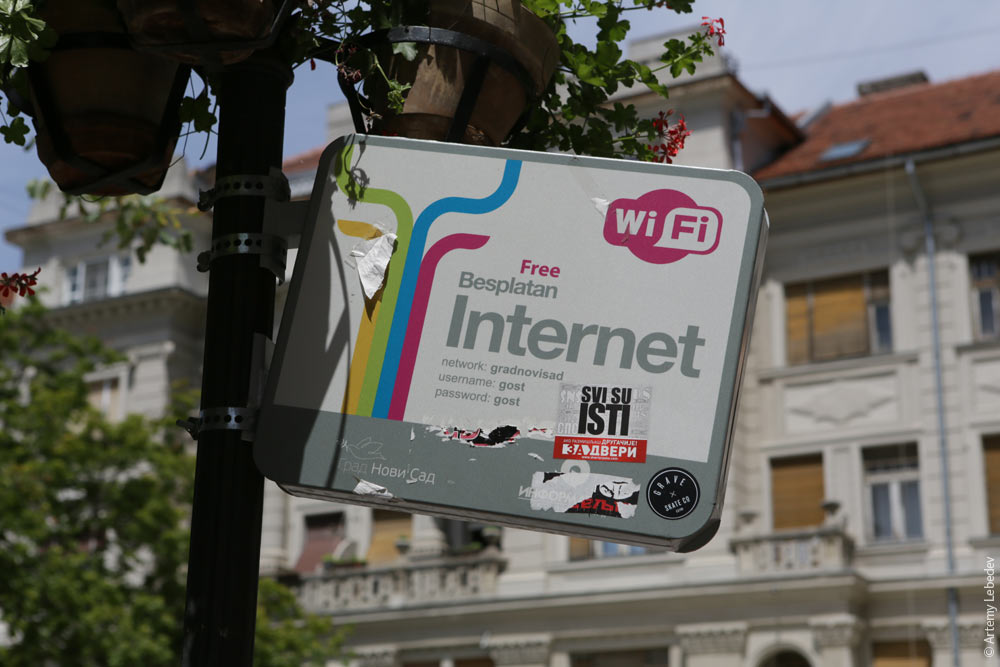 A municipal trash can. 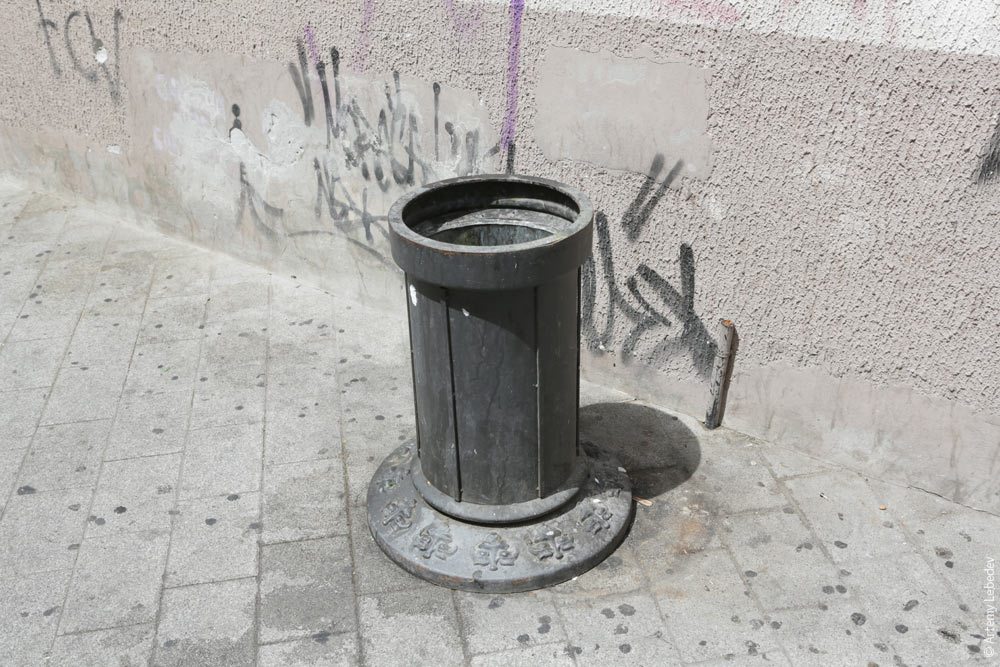 Here we were fortunate enough to witness an event of staggering beauty: the emptying of underground garbage containers. Serbia, like almost all European countries, has garbage containers whose main bulk is located underground. They’re about five meters deep and, unlike regular trash cans, don’t need to be emptied ten times a day. They come in two types: a cartridge model and one with a bag. 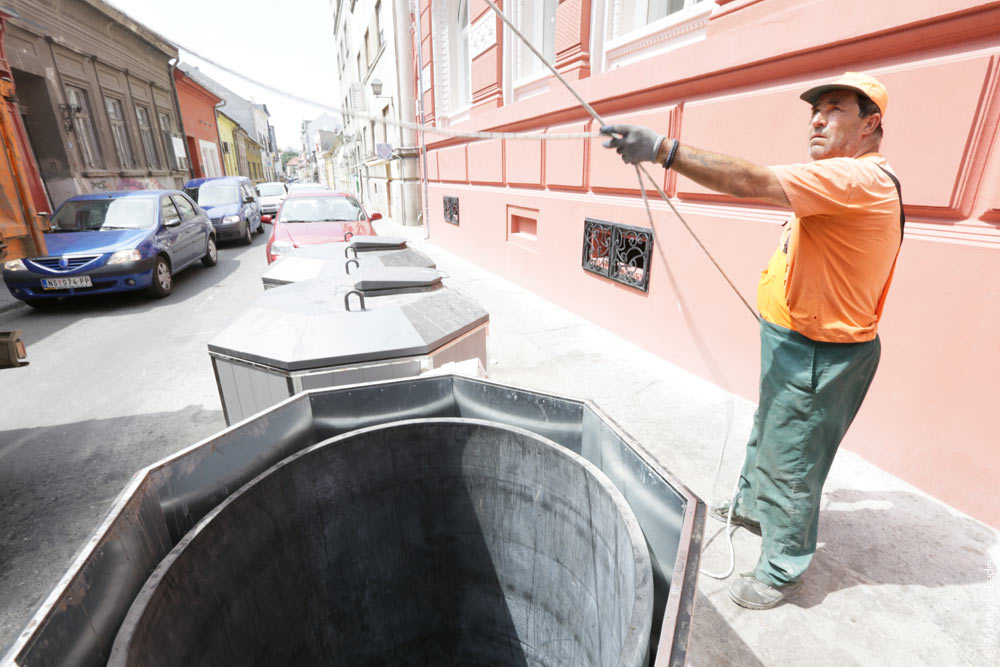 The crane lifts the bag. All the other cars on the street patiently stand and wait—it’s not like they have much of a choice anyway. 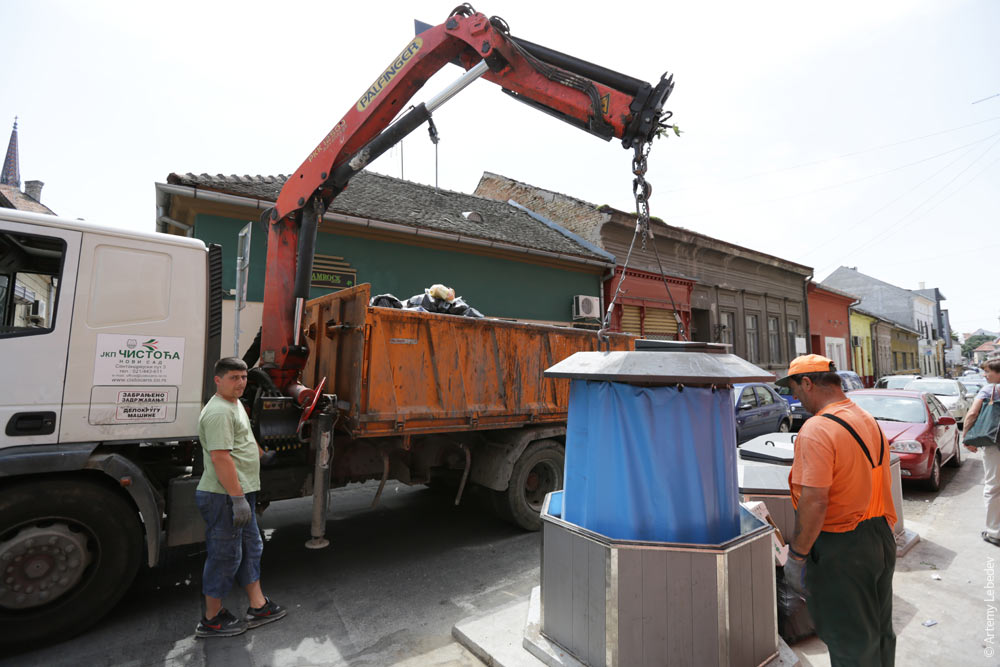 The bag resembles a giant condom. 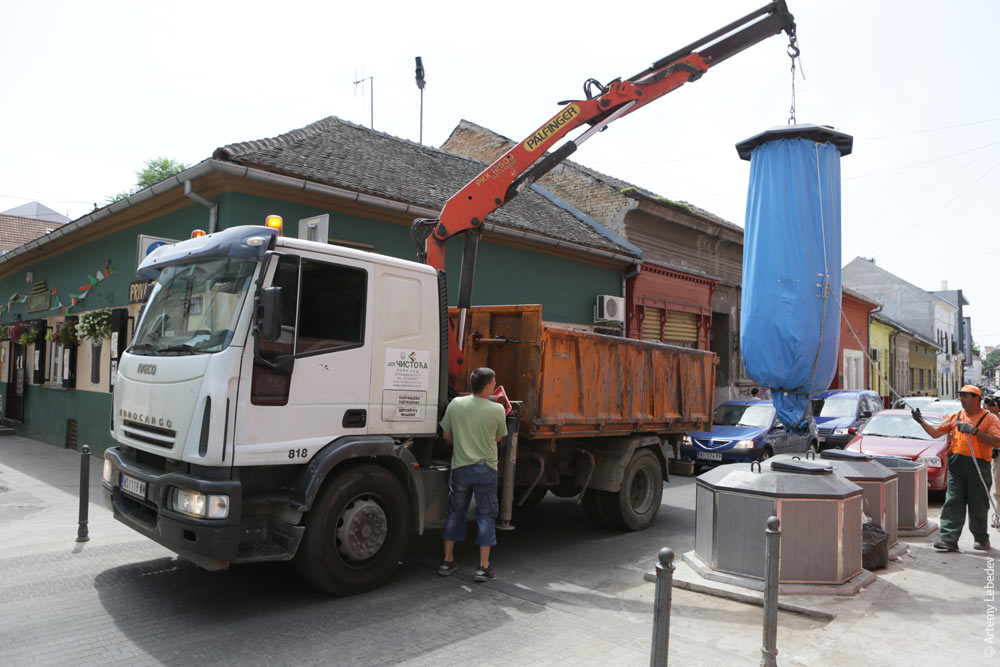 The worker pulls the rope which opens the bottom of the bag. 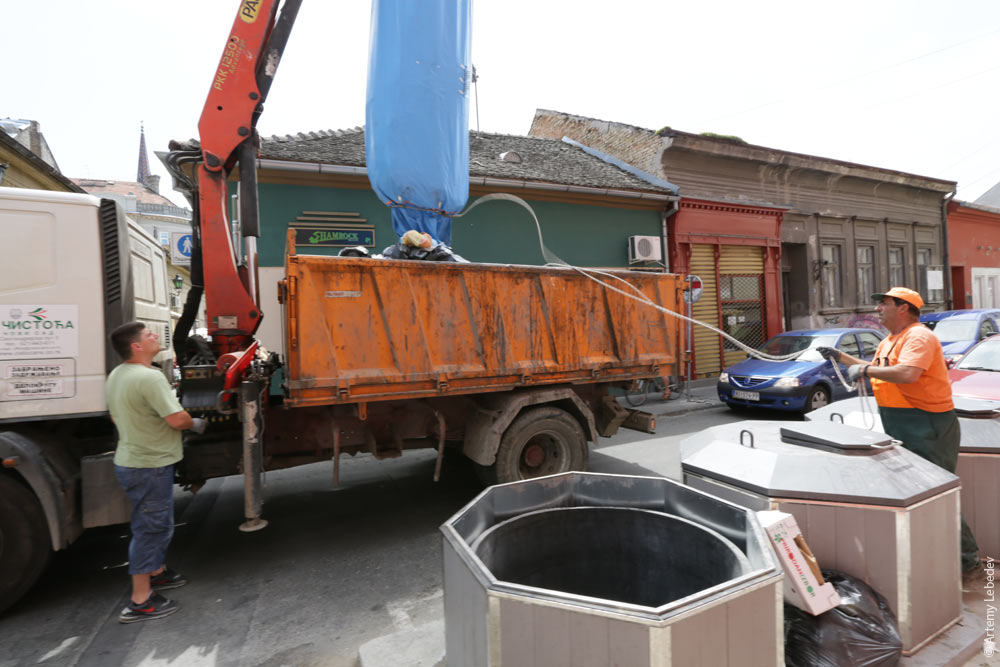 The garbage falls out into the truck. Then the empty bag is re-tied on the bottom and lowered back into place. 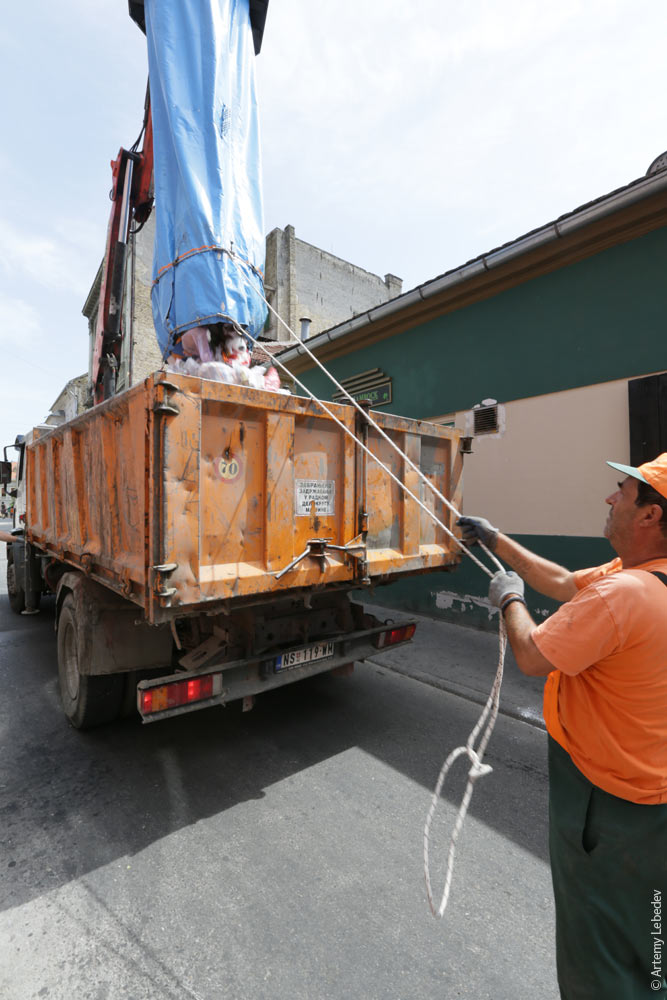 |